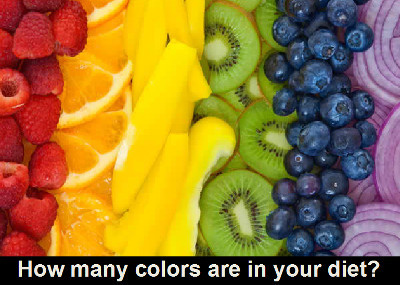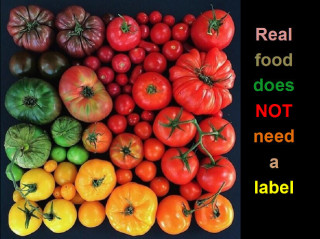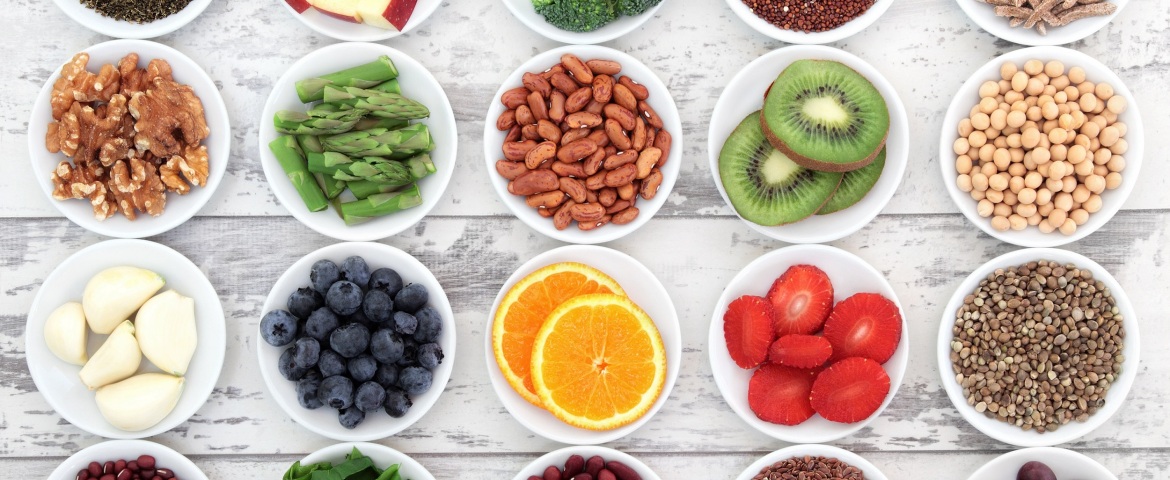By: Lisa McDowell, MS, RD, CSSD
I never imagined I would find myself repeating silly lessons to young hockey players, particularly those who have never heard of Popeye!
The grueling schedule and physical requirements necessitate fueling their bodies with the best food available.
Nutrition regimens are integral to being an elite hockey player. The grueling schedule and physical requirements necessitate fueling their bodies with the best food available. When planning menus for the Red Wings, my top priority is to incorporate delicious recipes, which contain ingredients packed with vitamins, minerals, antioxidants, and plant compounds called phytochemicals.
Ask any player, and they will probably tell you I often encourage them to “eat the rainbow.” Of course, I’m not talking about Skittles. Instead, I know that natural foods of various colors provide different benefits. Fortunately, the players understand the need for the spectrum of the rainbow and pay attention to the small details – like eating berries every day, adding lemons to their water, ordering extra sides of veggies and always trying to incorporate deeply colored pigmented fruits and veggies, nuts, beans, teas, spices and herbs.
These foods provide the players’ bodies with protective compounds that help them recover from the damage incurred during their extreme exercise conditioning. To understand this, you first have to understand that high-intensity exercise results in the creation of free radicals (unpaired electrons) in the body. Free radicals are detrimental to the body, and are particularly damaging to professional athletes because they delay the body’s ability to recover. On the other hand, antioxidants – which are found naturally in many healthy foods – help to eliminate free radicals. So imagine, for a moment, that antioxidants are Pac Man, and the free radicals are all those ghosts. Antioxidants chase all those free radicals, which are formed during exercise. Without these phytochemicals and antioxidants, our athletes would not recover well to play the next day due to the damage of the free radicals
So, our goal for the Red Wings is to have the players eat at least 10 servings of fruits and vegetables with at least eight different colors. In fact, our chef selects the finest produce, keeping in mind the need for post-game recovery fruit cups and colorful, morning omelettes.
We know the rainbow colors are important for the following benefits:
 Purple/ Blue – longevity, mental sharpness, powerful antioxidants
Red – heart health, blood flow and joint support
Yellow – beauty, vision, digestion
Orange – cancer prevention and collagen growth
White – immune system support
Brown – muscle fuel and blood sugar control
Black – anti-inflammation
Purple/ Blue – longevity, mental sharpness, powerful antioxidants
Red – heart health, blood flow and joint support
Yellow – beauty, vision, digestion
Orange – cancer prevention and collagen growth
White – immune system support
Brown – muscle fuel and blood sugar control
Black – anti-inflammation
We feel most alive if we choose to eat food that was alive and not processed from a box. Challenge yourself when you go to sleep tonight and count how many colors of the rainbow you were able to eat. Remember, in order to have these available, you must visit the produce section of your favorite store or farmer’s market.
So planning ahead quickly becomes a habit. When shopping for my family, I always count an apple a day for each family member, which means I need 28 apples in a week! It’s become routine to expect an apple in brown-bag lunches.

There is a reason for the saying about an apple a day – a recent study compared eating an apple each day vs. taking a cholesterol-lowing medication called a statin, and found the apple to be as effective due to the water-soluble fiber found in the skin of the apple. Popeye ate his spinach because spinach helps improve blood flow to the muscles by providing nitric oxide. When our team is racing to a puck, we want good blood flow to their muscles to beat our opponent. If a handful of spinach added to pasta helps us get to the puck faster, then we are optimizing the small details that can make a difference. This attention to detail is imperative when playing at such a high level.
But you don’t have to be a professional hockey player to enjoy the benefits of super foods. You simply feel your best and find you have more energy when you eat the rainbow. There are so many great examples to share and a few of my favorites are listed below:
1) Blueberries (Berries): Berries, in general, including strawberries, cherries, raspberries and goji berries, are considered a ‘super food’ because they are full of flavonoids, vitamin C and ellagic acid, which studies have shown may inhibit the growth of cancer cells.
Blueberries ounce for ounce provide more antioxidants than any other fruit or vegetable and have been shown to improve memory and mental sharpness. This is pretty helpful when you are a goalie stopping pucks!
2) Dark Chocolate (Antioxidants): The darker the chocolate, the better it is for you and the less sugar it will contain. Dark chocolate is full of beneficial antioxidants and phytochemicals. While it is good news that chocolate is great for you, you shouldn’t eat excessive amounts. One ounce per day of cocoa >70 percent is perfect.
3) Sweet Potatoes (Vitamin A): Bright orange vegetables, like sweet potatoes, are packed with the carotenoid antioxidants, alpha and beta-carotene, as well as vitamin E, which help protect from free radical damage and enhance the immune system. Vitamin A rich vegetables include: pumpkin, carrots, orange bell peppers, and butternut squash. Cooking these vegetables also helps the body absorb more of the carotenoids, so try to eat both raw and cooked versions for a good balance.
4) Spinach (Dark Leafy Greens): As a member of the ‘dark leafy greens’ family, spinach is full of antioxidants, carotene and lutein, which play a role in eye health. Dark leafy greens like spinach, kale, collards, chard, mustard greens and turnip greens are great sources of nitric oxide, folate, fiber, vitamin K and B-vitamins.
5) Oats (Whole Grains): Oats contain soluble fiber that has been shown to lower your serum cholesterol, in particular LDL cholesterol, and should be incorporated into your daily diet. Whole grains, which include oats, brown rice, barley and many others, should be your first choice over refined grains like white flour and white rice, which lack fiber and the phytochemicals that whole grains contain.
6) Olive Oil (Mono-unsaturated fats): A traditional staple of the Mediterranean diet, olive oil is rich in monounsaturated fat, antioxidant polyphenols and vitamin E. Whenever possible use olive oil instead of saturated fats and margarine. It may help to lower your risk of heart disease.
7) Onion and Garlic (Alliums): Onions contain allium compounds that have been linked to a reduced risk of some cancers. Red onions in particular are rich in a phytochemical called quercetin, which is a strong antioxidant. They also may help to improve circulation and to regulate blood pressure. The unique flavor of garlic comes from phytochemicals known as allylic sulphides, which act as antioxidants, helping the body ward off cell damage. Studies suggest garlic may help reduce the risk of cancer.
8) Oranges (Vitamin C): Long recognized as a potent source of vitamin C, oranges also are a good source of fiber and folic acid. Vitamin C is required for the production of collagen, which is essential for skin, bone, and teeth health. Fruits rich in Vitamin C include: strawberries, kiwi, citrus fruits and guava. Incorporate at least one serving of vitamin C-rich fruits every day.
9) Wild Alaskan Salmon (Oily Fish): Like all oily fish, salmon is a great source of omega-3 fatty acids, beneficial for fighting inflammation, enhancing the immune system, heart health, and cancer prevention. Salmon also is a good source of selenium. Try to have one to two 3-ounce servings of fish per week. Fish high in omega-3 include herring, mackerel, trout and sardines.
10) Broccoli (Cruciferous Vegetables): Known as a cruciferous vegetable, it contains the phytochemical sulphoraphane, which has been shown to activate enzymes that may destroy cancer-causing chemicals. It also is a good source of folic acid and vitamin C as well as other antioxidants. Other excellent veggies in the cruciferous family include arugula, Brussels sprouts, watercress and cabbage.
11) Beans (Legumes): Loaded with fiber, protein and polyphenols, beans should be a part of any healthy diet. Colorful beans like black beans, pinto beans, broad beans, fava beans and lentils have the highest antioxidant content. Beans also are an excellent source of folate.
12) Tea (Flavonoids): Teas made from the plant Camellia sinensis, which include green tea, black tea, white tea and oolong tea, are rich in catechin flavonoids, powerful antioxidants, which may help reduce the risk of cancer and heart disease. Brewing the tea for at least three minutes and squeezing the tea bag will increase the flavonoid content of your tea. I learned Russian hockey players like to drink tea in between periods!
13) Tomatoes (Lycopene): The anti-oxidant lycopene is what gives the tomato its beautiful red color. Lycopene also is found in watermelon, guava, red peppers and grapefruit. Research has indicated that eating plenty of lycopene-containing foods, especially cooked tomatoes, may reduce the risk of heart disease and cancer. Lycopene foods also are a source of vitamin C and E, flavonoids and potassium, which may help regulate blood pressure and blood flow.
14) Walnuts (Nuts) and Seeds: Nuts, including almonds, sunflower seeds, brazil nuts, pecans, cashews, etc., are excellent sources of vitamin E and omega-3 fatty acids, not to mention a healthy source of protein. Walnuts have the highest content of polyunsaturated fats, which may help reduce LDL (the ‘bad’) cholesterol and raise HDL (the ‘good’) cholesterol. Consuming one ounce of nuts per day should be a part of a healthy, balanced diet. Did you know one Brazil nut provides all the selenium you need in a day? We make sure our players get a mixture of nuts.
15) Greek Yogurt (Pro/Pre-biotics): Yogurt is considered a ‘super food’ because of the pro and prebiotics it contains that promote a healthy GI tract and help to support the immune system. Probiotics are the ‘healthy bacteria’ that populate the GI tract and pre-biotics are the nutrients that the probiotics like to feed on. When selecting yogurt, look for those with no added sugar and at least 15 grams of protein. Plain is the best because there is no added sugar.
You may also be interested in watching a short video from camp last summer. We taught the team 9 different recipes (eating the rainbow) and at the end of the video you can hear Michael Babcock joking about Skittles being the rainbow. As they say, laughter is the best medicine and these guys keep me laughing.
About the Author: Lisa McDowell, MS, RD, CSSD is a board certified specialist in sports dietetics and the team dietitian for the Detroit Red Wings. She has worked with professional, collegiate, and Olympic athletes since 1996. Most recently, Lisa worked with Team USA athletes at the 2012 Summer Olympic Games in London.


